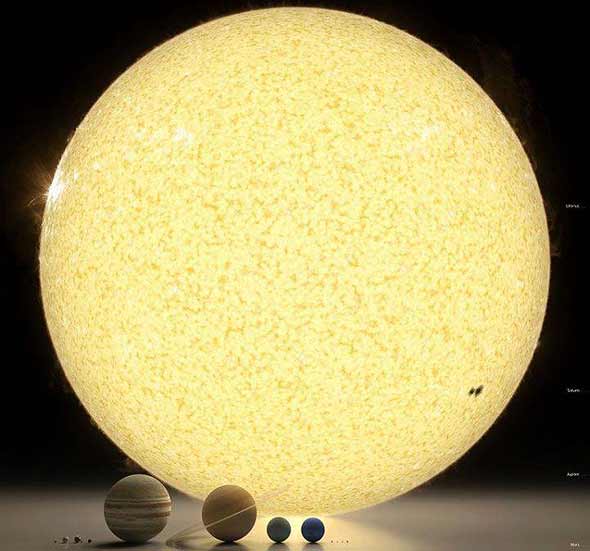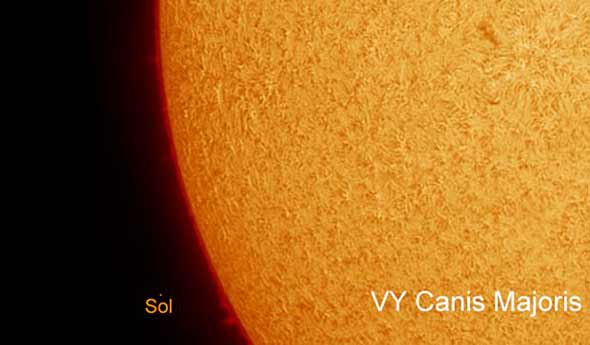Festive Creations by Artist-Engineers • B.E.Johnson & Joy Alyssa Day
Solar System Collection | $365
All 8 planets + Pluto + Sun
All 8 planets + Pluto + Sun
Note: The individual photographs of each ornament
are not all shot at the same focal length.
are not all shot at the same focal length.
I had long searched galleries for baubles that happened to resemble celestial bodies–mostly atmosphereless cratered planets and moons–but could never find any that looked like our Earth or its planetary neighbors.That was before I and Joy Alyssa Day took up glass blowing. Now, we create celestial ornaments that capture the essence of our Solar System in hand-blown glass; exhibiting the wonderful diversity of the individual spheres that circle our closest star along with us.We like to think of them as the Universe come to imitate itself.We're scientist-artist-engineers...
would you expect anything less!?— B.E.Johnson
would you expect anything less!?— B.E.Johnson
Extrasolar Planets Available On Request
· • We Love Doing Them • ·
They Make Each Expanded Collection
Even More Unique
· • We Love Doing Them • ·
They Make Each Expanded Collection
Even More Unique
· • The Solar System Collection FAQs — A Good Read •·
We're scientists. We actually do know what we're doing.
Scientific Art is something we're quite excited about and we are happy that our excitement is contagious. It also generates a lot of observations that have sparked a few FAQs, so we thought it best to consolidate and answer your questions all in one place.
Scientific Art is something we're quite excited about and we are happy that our excitement is contagious. It also generates a lot of observations that have sparked a few FAQs, so we thought it best to consolidate and answer your questions all in one place.
-
Most Cited is: "They're not to scale." It isn't even remotely practical, let alone possible in some cases, to even try to do scale when dealing with sizes and distances so extreme. It is a constant problem that we wrestle with on many commissions. If we made Earth 3", Jupiter would be 33" and the Sun 27'4" — No one has a tree that large! Make the Sun 4", which it is in the Collection, Mercury is then 0.014", Earth is 0.036", Jupiter is 0.4" and Pluto is 0.006". That's six thousandths of an inch! Not much to look at—and they certainly don't make great Christmas ornaments.
Here is a visual that may bring the concept into clearer focus:
Illustration by Robert Zicher

Mercury, Venus, Earth & Moon, Mars are to the left of Jupiter.
You can readily see how unworkable this off hand observation is to achieve. We get the same comments about our Celestial Winds Blown Glass & Carbon Fiber Solar System Mobiles. The largest of which, so far, is 40 feet in diameter. The Sun is 18 inches. If the planets were in scale to the Sun, Mercury would be 1/16 of an inch at a distance of 62 feet. Jupiter would be 1.8 inches at 839 feet (nearly 3 football fields) and Pluto 1/32 of an inch at 1.2 miles. Everything but the Sun is outside the building! Interesting, but boring to look at; if you could find them. Instead, we made the planets in sizes that you can see, proportioned them relatively and compressed the distances to get them all into the room. There is a scale. We call it "Relative Scale"
The Sun is by far the largest and cannot really be in scale to anything except other stars. Even then, the scales involved are immense. Compared to CY Canis Majoris, Sol is but a dust mote:

You can appreciate the task we have in attempting to communicate this, so Relative Scale came into being.
The Rocky planets are proportional to each other. The Gas Giants are proportional to each other. The Rocky and Gas Giant groups are proportional to each other, but on yet a different scale. This still gives a sense of the relationships and there's something grand to look at that tells an educational story. We're Scientist-Artist-Engineers well versed in this stuff, but there is only so much that one can do in a given situation and have it be successful. Take Your Best Shot
You could think of it this way: If you had a fixed focal length lens and traveled to each of the planets, you would have to be closer or farther away to get them into the frame to get your shot. Your orbital radius varies from planet to planet, so you can see the whole object. The ornaments are 3D snapshots in blown glass. - "Pluto isn't a planet." Pluto represents the Kuiper Belt Objects and, no matter how he's classed at present, he's still part of our Solar System and was discovered long before all of the other KBOs. I even met Clyde Tombaugh, the astronomer who discovered him. He deserves a place in our Collection. It's the Right Thing To Do. Neil deGrasse Tyson is a good friend of ours and a client. He's cool with it. What's not to like?
-
"Uranus lays on its side." All of the planets are attached at their poles. Inclination to Ecliptic isn't really relevant in this case. Earth isn't at 23.45°, Mars isn't at 25.19°, Saturn isn't at 26.73°, Neptune isn't at 28.32°. Even more striking are Venus at 177.36° and Pluto at 122.53°—farther off than Uranus but no one ever mentions them. Mercury is actually correct at 0°.
A significant amount of extra work is required to make Uranus at 97.7°. We will certainly do it as an option if you wish, but we are trying to keep the cost in a range where people can more easily afford them. On the mobiles, all of the planets are at their correct angles to the ecliptic because, well... the budget supports that level. -
"More than one planet has rings." True. Those are to scale. You can't see them. Very difficult to make.
Saturn's majestic rings are the only ones that we can see without viewing the planet from the side opposite the Sun, looking back toward it, so that they light up due to forward scattering. The rings on our Saturns (Any size. We make The Planetary Society Cosmos Awards which are 10" in diameter) are not only in scale with the planet but are etched on a vertical lathe according to data gathered by the Cassini spacecraft. The others will just have to be left to one's imagination. -
"Very expensive." Anything really worth having usually is. They're not for everyone.
Things made by hand in the USA are rare these days. Rarity isn't what determines the price, however. Knowledge, ability, experience, care and honest hard work does. That and significant cost of electricity and propane to run our hot shop. Being able to select and apply the right colors in the right places at the right time, then have the decoration correctly progress across the surface without touching it as it expands into a thin sphere to achieve the look of a specific planet is more difficult than it looks. A lot of trial and error went into developing the formulae and techniques for these and, just like any space program, we have boxes full of failures.
They are for those who appreciate and value quality, craftsmanship and effort required to produce a treasure. These are special people in all walks of life. They wish to support a working artist and have something made especially for them to hand down in years to come. We pour a lot of ourselves into everything we do and we sign our work. Our direct connection with our clients and patrons is one of the sincere benefits for us and we love hearing from them when their shipment arrives. Everything comes together and we deeply appreciate it. "I'd love to get them but can't afford it right now."
Not a problem! We understand and make it so that you can buy these individually, or a few at a time, and make an adventure of it. When you complete the set, we'll include the Sun; just as if you had purchased the set all at one time. Just let us know that this is your intention and we'll note it on your account, so that we don't overlook shipping your beautiful Sun. -
"Do you make alien solar systems?" You bet! They're fun. We've had a number of clients add Extrasolar Planets to their Collection or order complete Extrasolar Systems. If you have an Extrasolar System in mind, just order the Collection and request this in the cart Special Instructions box. We'll contact you directly to discuss your preferences.
Use our Contact Form or call us at: 585-209-8890 to discuss your order or custom requests.
Copyright: All artwork is copyrighted by the artists and images as such may not be reproduced in print, the world wide web (Internet) or any other media for external promotional purposes without written consent. Please contact us for permission.

